Diurnal Variations in Greenspace Cooling Efficiency and Their Non-Linear Responses to Meteorological Change: Hourly Analysis of Air Temperature in Changsha, China
Abstract
1. Introduction
2. Materials and Methods
2.1. Study Area
2.2. Quantifying the Hourly GCE
2.3. Exploring the Non-Linear Response of GCE to Meteorological Variables
3. Results
3.1. Temporal Variations in the Hourly GCE
3.2. Non-Linear Responses of GCE to Meteorological Change
4. Discussion
4.1. Stronger Nighttime GCE than Daytime GCE
4.2. Non-Linear Responses of GCE to Meteorological Change
4.3. Limitations and Future Research Recommendations
5. Conclusions
Author Contributions
Funding
Institutional Review Board Statement
Informed Consent Statement
Data Availability Statement
Acknowledgments
Conflicts of Interest
References
- Zhang, K.; Cao, C.; Chu, H.; Zhao, L.; Zhao, J.; Lee, X. Increased heat risk in wet climate induced by urban humid heat. Nature 2023, 617, 738–742. [Google Scholar] [CrossRef]
- Ho, J.Y.; Shi, Y.; Lau, K.K.L.; Ng, E.Y.Y.; Ren, C.; Goggins, W.B. Urban heat island effect-related mortality under extreme heat and non-extreme heat scenarios: A 2010–2019 case study in Hong Kong. Sci. Total Environ. 2023, 858, 159791. [Google Scholar] [CrossRef] [PubMed]
- Li, X.; Zhou, Y.; Yu, S.; Jia, G.; Li, H.; Li, W. Urban heat island impacts on building energy consumption: A review of approaches and findings. Energy 2019, 174, 407–419. [Google Scholar] [CrossRef]
- Roxon, J.; Ulm, F.J.; Pellenq, R.J.M. Urban heat island impact on state residential energy cost and CO2 emissions in the United States. Urban Clim. 2020, 31, 100546. [Google Scholar] [CrossRef]
- Schwaab, J.; Meier, R.; Mussetti, G.; Seneviratne, S.; Burgi, C.; Davin, E.L. The role of urban trees in reducing land surface temperatures in European cities. Nat. Commun. 2021, 12, 6763. [Google Scholar] [CrossRef]
- Gilligan, C. Cooling effects of urban trees are strongest in under-resourced neighbourhoods. Nat. Rev. Earth Environ. 2023, 4, 517. [Google Scholar] [CrossRef]
- Su, Y.; Wu, J.; Zhang, C.; Wu, X.; Li, Q.; Liu, L.; Bi, C.; Zhang, H.; Lafortezza, R.; Chen, X. Estimating the cooling effect magnitude of urban vegetation in different climate zones using multi-source remote sensing. Urban Clim. 2022, 43, 101155. [Google Scholar] [CrossRef]
- Wang, C.; Wang, Z.-H.; Wang, C.; Myint, S.W. Environmental cooling provided by urban trees under extreme heat and cold waves in U.S. cities. Remote Sens. Environ. 2019, 227, 28–43. [Google Scholar] [CrossRef]
- Zhao, J.; Zhao, X.; Wu, D.; Meili, N.; Fatichi, S. Satellite-based evidence highlights a considerable increase of urban tree cooling benefits from 2000 to 2015. Glob. Change Biol. 2023, 29, 3085–3097. [Google Scholar] [CrossRef]
- Ibsen, P.C.; Crawford, B.R.; Corro, L.M.; Bagstad, K.J.; McNellis, B.E.; Jenerette, G.D.; Diffendorfer, J.E. Urban tree cover provides consistent mitigation of extreme heat in arid but not humid cities. Sustain. Cities Soc. 2024, 113, 105677. [Google Scholar] [CrossRef]
- Zhan, W.; Wang, C.; Wang, S.; Li, L.; Ji, Y.; Du, H.; Huang, F.; Jiang, S.; Liu, Z.; Fu, H. Fraction-dependent variations in cooling efficiency of urban trees across global cities. ISPRS J. Photogramm. Remote Sens. 2024, 216, 229–239. [Google Scholar] [CrossRef]
- Wang, J.; Zhou, W.; Jiao, M.; Zheng, Z.; Ren, T.; Zhang, Q. Significant effects of ecological context on urban trees’ cooling efficiency. ISPRS J. Photogramm. Remote Sens. 2020, 159, 78–89. [Google Scholar] [CrossRef]
- Cheng, X.; Peng, J.; Dong, J.; Liu, Y.; Wang, Y. Non-linear effects of meteorological variables on cooling efficiency of African urban trees. Environ. Int. 2022, 169, 107489. [Google Scholar] [CrossRef] [PubMed]
- Leng, S.; Sun, R.; Yan, M.; He, H.; Chen, L. Interannual variability and spatial diversification of global urban tree cooling effects. Environ. Int. 2024, 192, 109044. [Google Scholar] [CrossRef] [PubMed]
- Wu, W.; Guo, F.; Elze, S.; Knopp, J.; Banzhaf, E. Deciphering the effects of 2D/3D urban morphology on diurnal cooling efficiency of urban green space. Build. Environ. 2024, 266, 112047. [Google Scholar] [CrossRef]
- Yang, L.; Ge, J.; Cao, Y.; Liu, Y.; Luo, X.; Wang, S.; Guo, W. Enhanced Cooling Efficiency of Urban Trees on Hotter Summer Days in 70 Cities of China. Adv. Atmos. Sci. 2024, 41, 2259–2275. [Google Scholar] [CrossRef]
- Ouyang, W.; Morakinyo, T.E.; Ren, C.; Ng, E. The cooling efficiency of variable greenery coverage ratios in different urban densities: A study in a subtropical climate. Build. Environ. 2020, 174, 106772. [Google Scholar] [CrossRef]
- Alonzo, M.; Baker, M.E.; Gao, Y.; Shandas, V. Spatial configuration and time of day impact the magnitude of urban tree canopy cooling. Environ. Res. Lett. 2021, 16, 084028. [Google Scholar] [CrossRef]
- Wang, J.; Zhou, W.; Jiao, M. Location matters: Planting urban trees in the right places improves cooling. Front. Ecol. Environ. 2022, 20, 147–151. [Google Scholar] [CrossRef]
- Du, M.; Li, N.; Hu, T.; Yang, Q.; Chakraborty, T.C.; Venter, Z.; Yao, R. Daytime cooling efficiencies of urban trees derived from land surface temperature are much higher than those for air temperature. Environ. Res. Lett. 2024, 19, 044037. [Google Scholar] [CrossRef]
- Ibsen, P.C.; Borowy, D.; Dell, T.; Greydanus, H.; Gupta, N.; Hondula, D.M.; Meixner, T.; Santelmann, M.V.; Shiflett, S.A.; Sukop, M.C.; et al. Greater aridity increases the magnitude of urban nighttime vegetation-derived air cooling. Environ. Res. Lett. 2021, 16, 034011. [Google Scholar] [CrossRef]
- Shen, P.; Zhao, S.; Zhou, D.; Lu, B.; Han, Z.; Ma, Y.; Wang, Y.; Zhang, C.; Shi, C.; Song, L.; et al. Surface and canopy urban heat island disparities across 2064 urban clusters in China. Sci. Total Environ. 2024, 955, 177035. [Google Scholar] [CrossRef] [PubMed]
- Venter, Z.S.; Chakraborty, T.; Lee, X. Crowdsourced air temperatures contrast satellite measures of the urban heat island and its mechanisms. Sci. Adv. 2021, 7, eabb9569. [Google Scholar] [CrossRef] [PubMed]
- Cao, J.; Zhou, W.; Zheng, Z.; Ren, T.; Wang, W. Within-city spatial and temporal heterogeneity of air temperature and its relationship with land surface temperature. Landsc. Urban Plan. 2021, 206, 103979. [Google Scholar] [CrossRef]
- Naserikia, M.; Hart, M.A.; Nazarian, N.; Bechtel, B.; Lipson, M.; Nice, K.A. Land surface and air temperature dynamics: The role of urban form and seasonality. Sci. Total Environ. 2023, 905, 167306. [Google Scholar] [CrossRef]
- Tian, Q.; Qiu, Q.; Wang, Z.; Cai, Z.; Hu, L.; Liu, H.; Feng, Y.; Li, X. Spatial Configuration of Urban Greenspace Affects Summer Air Temperature: Diurnal Variations and Scale Effects. Atmosphere 2023, 14, 1433. [Google Scholar] [CrossRef]
- Li, X.; Li, X.; Guldmann, J.-M.; Cai, Z.; Liao, W.; Yang, C.; Qiu, Q. A novel approach to identify the microclimatic edge effect width of urban green spaces at the landscape level: A case study of Changsha, China. Urban For. Urban Green. 2024, 99, 128462. [Google Scholar] [CrossRef]
- Hu, L.; Fan, C.; Cai, Z.; Liao, W.; Li, X. Greening residential quarters in China: What are the roles of urban form, socioeconomic factors, and biophysical context? Urban For. Urban Green. 2023, 86, 128020. [Google Scholar] [CrossRef]
- Ziter, C.D.; Pedersen, E.J.; Kucharik, C.J.; Turner, M.G. Scale-dependent interactions between tree canopy cover and impervious surfaces reduce daytime urban heat during summer. Proc. Natl. Acad. Sci. USA 2019, 116, 7575–7580. [Google Scholar] [CrossRef]
- Diederich, A. Generalized additive models. An introduction with R. J. Math. Psychol. 2007, 51, 339. [Google Scholar]
- Ravindra, K.; Rattan, P.; Mor, S.; Aggarwal, A.N. Generalized additive models: Building evidence of air pollution, climate change and human health. Environ. Int. 2019, 132, 104987. [Google Scholar] [CrossRef]
- Magazzino, C.; Mele, M.; Schneider, N. The relationship between air pollution and COVID-19-related deaths: An application to three French cities. Appl. Energy 2020, 279, 115835. [Google Scholar] [CrossRef] [PubMed]
- Yan, H.; Dong, L. The impacts of land cover types on urban outdoor thermal environment: The case of Beijing, China. J. Environ. Health Sci. Eng. 2015, 13, 43. [Google Scholar] [CrossRef] [PubMed]
- Howe, D.A.; Hathaway, J.M.; Ellis, K.N.; Mason, L.R. Spatial and temporal variability of air temperature across urban neighborhoods with varying amounts of tree canopy. Urban For. Urban Green. 2017, 27, 109–116. [Google Scholar] [CrossRef]
- Shiflett, S.A.; Liang, L.L.; Crum, S.M.; Feyisa, G.L.; Wang, J.; Jenerette, G.D. Variation in the urban vegetation, surface temperature, air temperature nexus. Sci. Total Environ. 2017, 579, 495–505. [Google Scholar] [CrossRef]
- Kotharkar, R.; Dongarsane, P.; Keskar, R. Determining influence of urban morphology on air temperature and heat index with hourly emphasis. Build. Environ. 2023, 233, 110044. [Google Scholar] [CrossRef]
- Sheng, L.; Tang, X.; You, H.; Gu, Q.; Hu, H. Comparison of the urban heat island intensity quantified by using air temperature and Landsat land surface temperature in Hangzhou, China. Ecol. Indic. 2017, 72, 738–746. [Google Scholar] [CrossRef]
- Wang, K.; Jiang, S.; Wang, J.; Zhou, C.; Wang, X.; Lee, X. Comparing the diurnal and seasonal variabilities of atmospheric and surface urban heat islands based on the Beijing urban meteorological network. J. Geophys. Res. Atmos. 2017, 122, 2131–2154. [Google Scholar] [CrossRef]
- Jiao, M.; Zhou, W.; Zheng, Z.; Wang, J.; Qian, Y. Patch size of trees affects its cooling effectiveness: A perspective from shading and transpiration processes. Agric. For. Meteorol. 2017, 247, 293–299. [Google Scholar] [CrossRef]
- Kjelgren, R.; Montague, T. Urban tree transpiration over turf and asphalt surfaces. Atmos. Environ. 1998, 32, 35–41. [Google Scholar] [CrossRef]
- Mao, Q.; Peng, J.; Wang, Y. Resolution Enhancement of Remotely Sensed Land Surface Temperature: Current Status and Perspectives. Remote Sens. 2021, 13, 1306. [Google Scholar] [CrossRef]
- Yang, Q.; Huang, X.; Tong, X.; Xiao, C.; Yang, J.; Liu, Y.; Cao, Y. Global assessment of urban trees’ cooling efficiency based on satellite observations. Environ. Res. Lett. 2022, 17, 034029. [Google Scholar] [CrossRef]
- Konarska, J.; Uddling, J.; Holmer, B.; Lutz, M.; Lindberg, F.; Pleijel, H.; Thorsson, S. Transpiration of urban trees and its cooling effect in a high latitude city. Int. J. Biometeorol. 2016, 60, 159–172. [Google Scholar] [CrossRef] [PubMed]
- Cheng, X.; Liu, Y.; Dong, J.; Corcoran, J.; Peng, J. Opposite climate impacts on urban green spaces’ cooling efficiency around their coverage change thresholds in major African cities. Sustain. Cities Soc. 2023, 88, 104254. [Google Scholar] [CrossRef]
- Gunawardena, K.R.; Wells, M.J.; Kershaw, T. Utilising green and bluespace to mitigate urban heat island intensity. Sci. Total Environ. 2017, 584–585, 1040–1055. [Google Scholar] [CrossRef] [PubMed]
- Yu, Z.; Xu, S.; Zhang, Y.; Jorgensen, G.; Vejre, H. Strong contributions of local background climate to the cooling effect of urban green vegetation. Sci. Rep. 2018, 8, 67–98. [Google Scholar] [CrossRef]
- Luo, J.; Xu, T.; Yan, C. Seasonal variation in vegetation cooling effect and its driving factors in a subtropical megacity. Build. Environ. 2024, 266, 112065. [Google Scholar] [CrossRef]
- Jiao, M.; Jenerette, G.D.; Zhou, W.; Wang, J.; Zheng, Z. Adaptive shading: How microclimates and surface types amplify tree cooling effects? Urban For. Urban Green. 2024, 101, 128546. [Google Scholar] [CrossRef]
- Jung, M.C.; Dyson, K.; Alberti, M. Urban Landscape Heterogeneity Influences the Relationship between Tree Canopy and Land Surface Temperature. Urban For. Urban Green. 2020, 57, 126930. [Google Scholar] [CrossRef]
- He, C.; Zhou, L.; Yao, Y.; Ma, W.; Kinney, P.L. Cooling effect of urban trees and its spatiotemporal characteristics: A comparative study. Build. Environ. 2021, 204, 108103. [Google Scholar] [CrossRef]
- Li, M.; Liu, H. Enhancing the cooling effect of urban green infrastructure: An empirical analysis of interactive impacts and optimizing pathways over 310 Chinese cities. Landsc. Urban Plan. 2025, 259, 105344. [Google Scholar] [CrossRef]
- Liao, W.; Guldmann, J.-M.; Hu, L.; Cao, Q.; Gan, D.; Li, X. Linking urban park cool island effects to the landscape patterns inside and outside the park: A simultaneous equation modeling approach. Landsc. Urban Plan. 2023, 232, 104681. [Google Scholar] [CrossRef]
- Bungau, C.C.; Hanga Prada, F.I.; Bungau, T.; Bungau, C.; Bendea, G.; Prada, M.F. Web of Science Scientometrics on the Energy Efficiency of Buildings to Support Sustainable Construction Policies. Sustainability 2023, 15, 8772. [Google Scholar] [CrossRef]
- Bungau, C.C.; Bungau, T.; Prada, I.F.; Prada, M.F. Green Buildings as a Necessity for Sustainable Environment Development: Dilemmas and Challenges. Sustainability 2022, 14, 13121. [Google Scholar] [CrossRef]
- Wong, T.L.X.; Lim, E.L.; Mohd Hasan, M.R.; Sougui, O.O.; Milad, A.; Qu, X. Effectiveness of heat-reflective asphalt pavements in mitigating urban heat islands: A systematic literature review. J. Road Eng. 2024, 4, 399–420. [Google Scholar] [CrossRef]
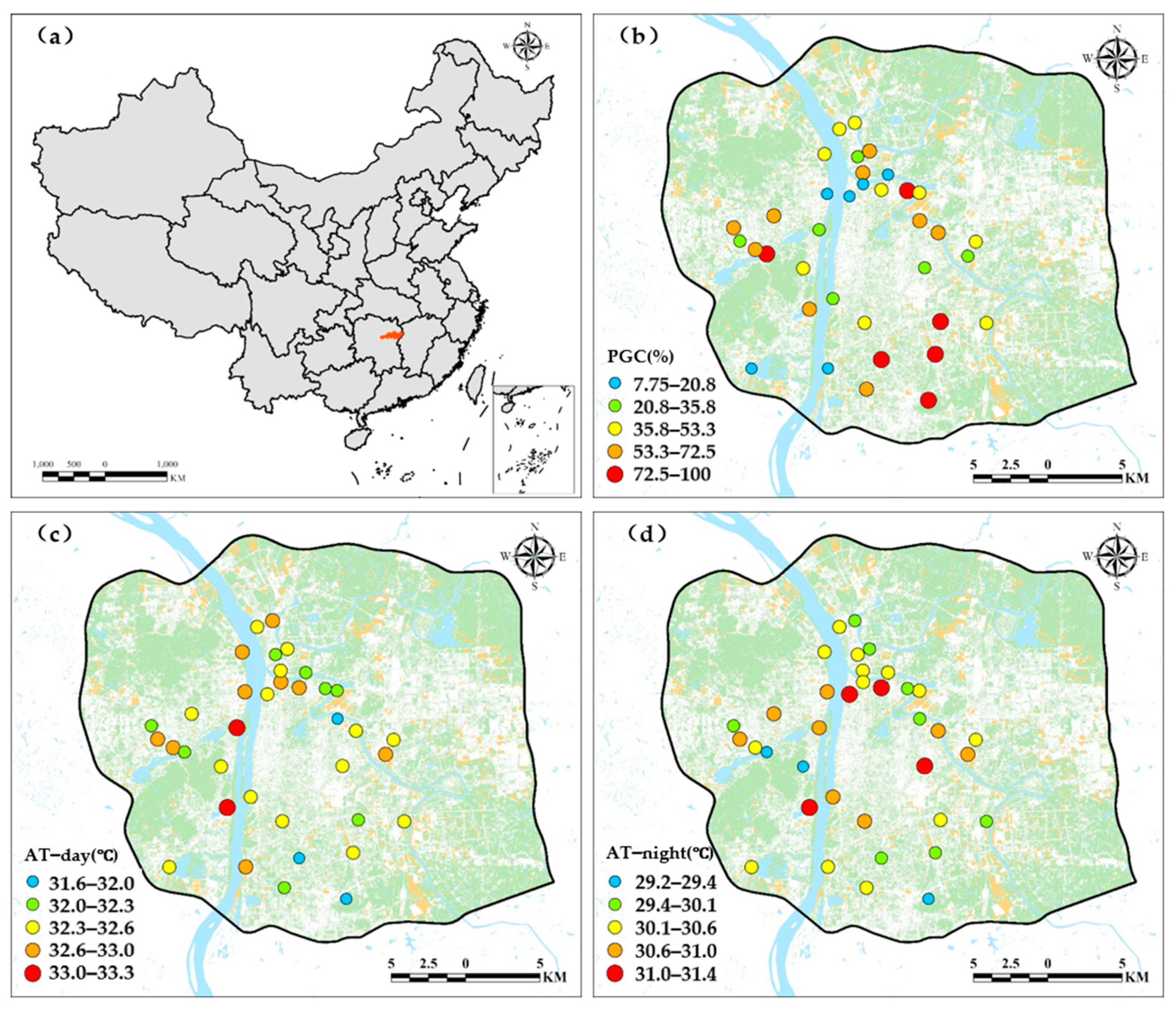
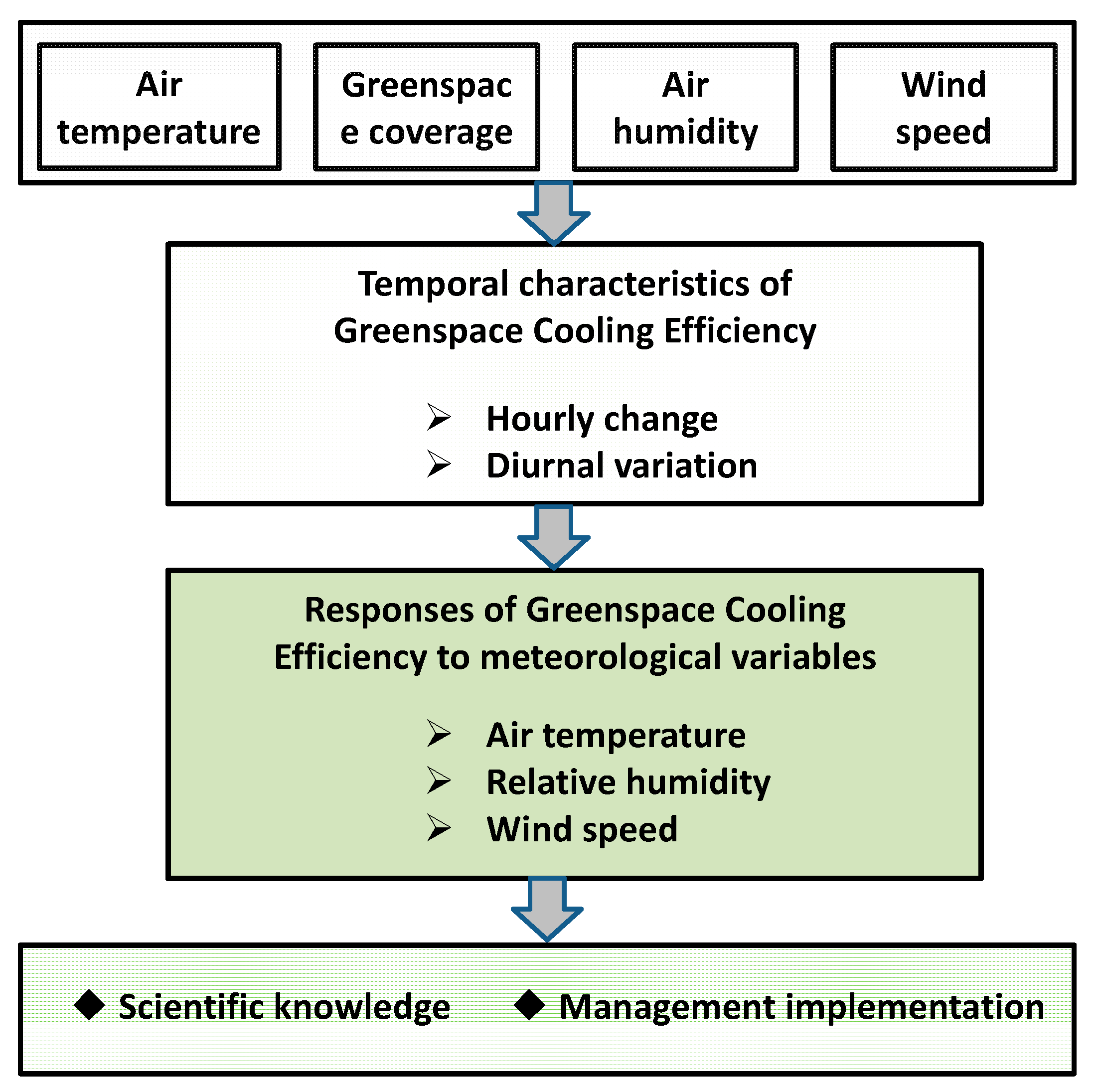
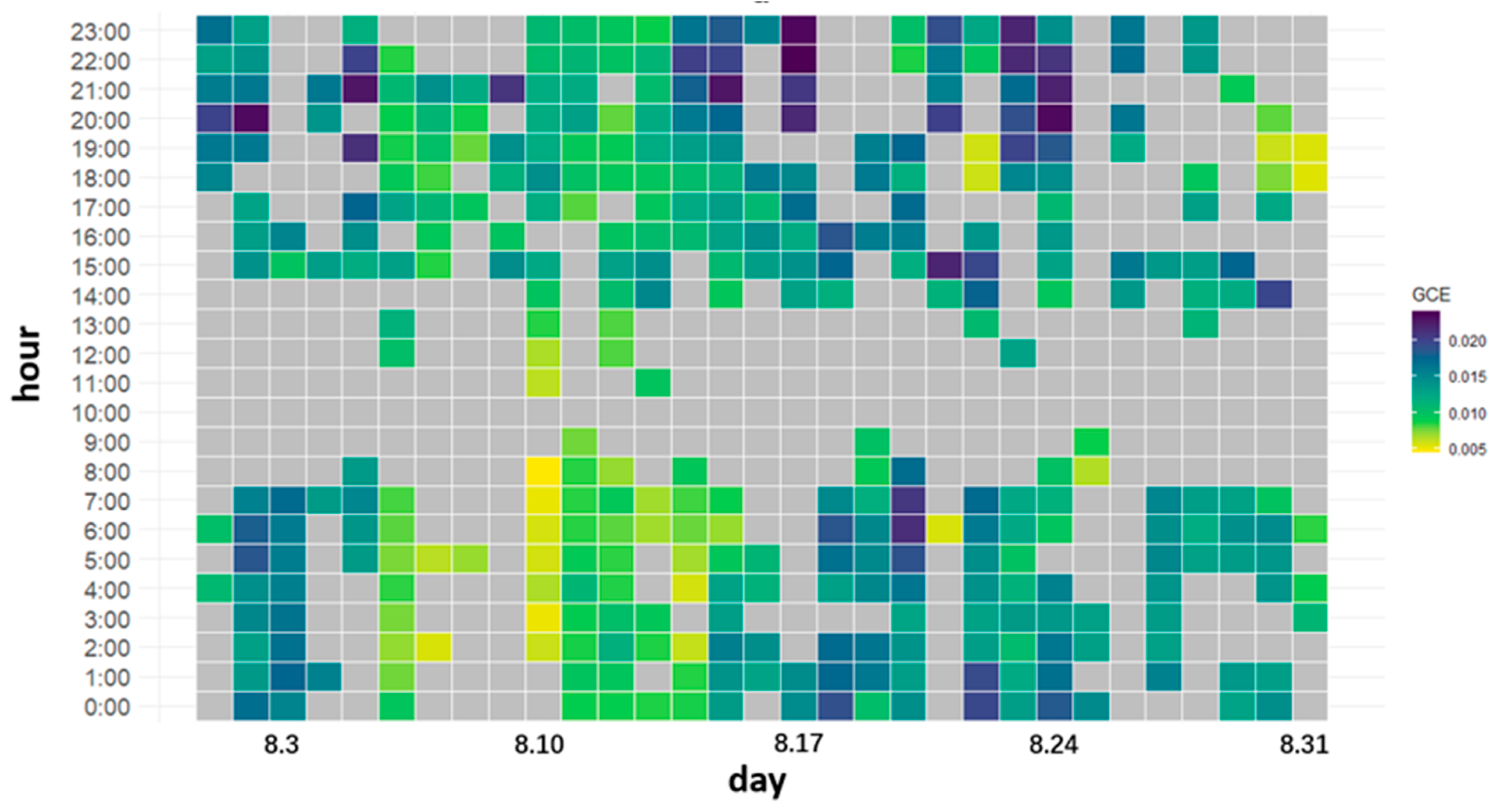
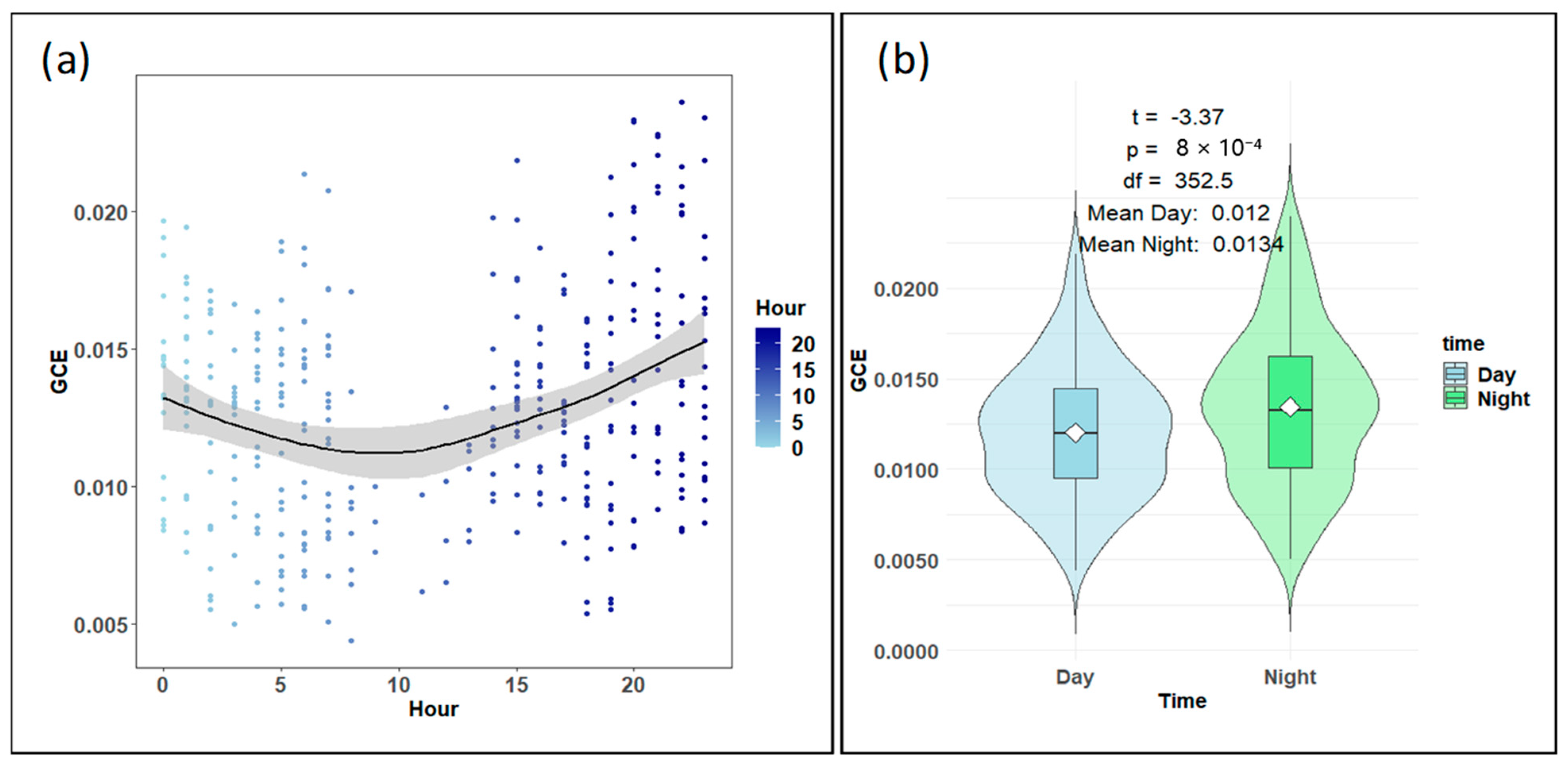
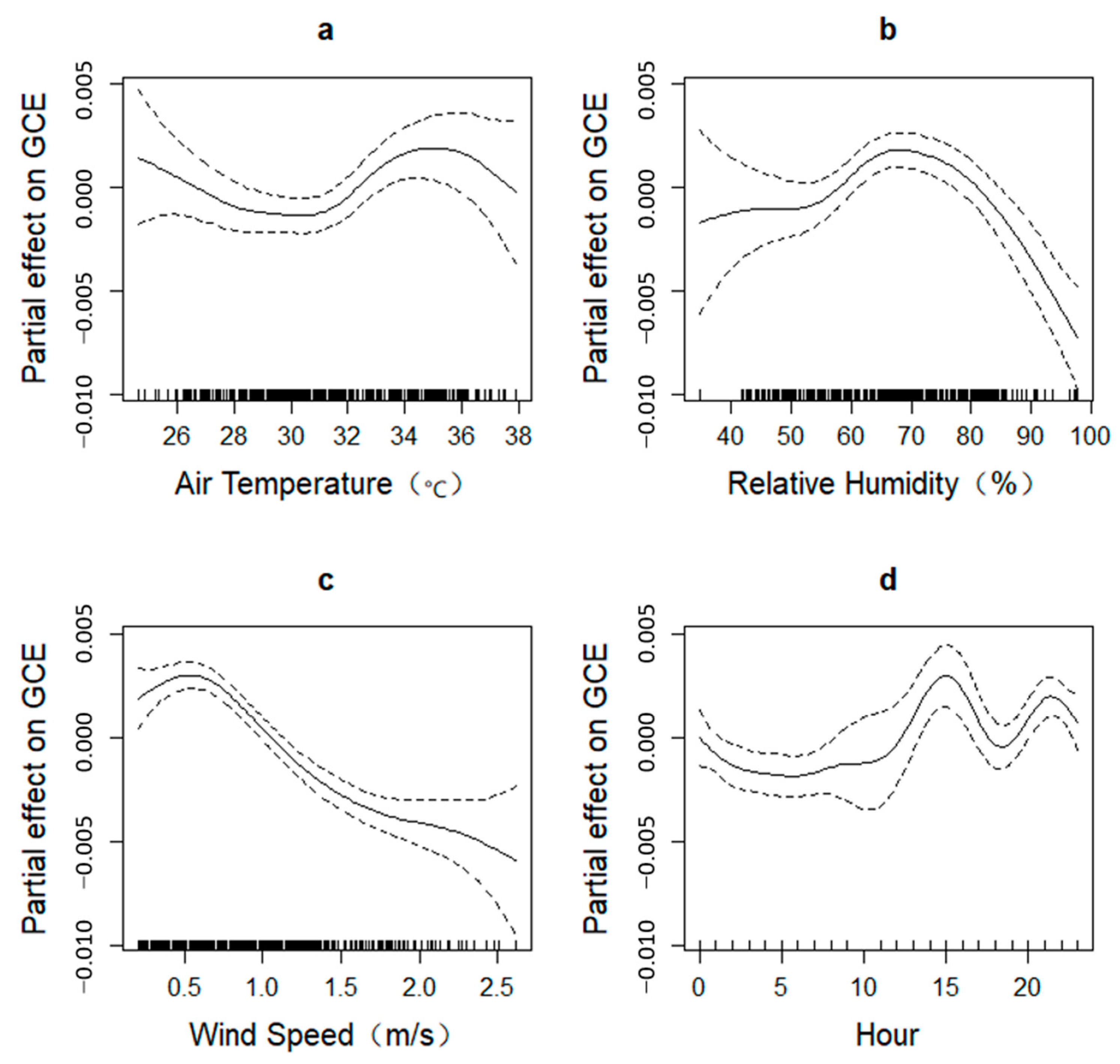
| Smoothed Variable | Edf | Ref. df | p-Value | F-Value | Adjust R2 | Deviance Explained (%) |
|---|---|---|---|---|---|---|
| Air temperature | 5.203 | 6.413 | 0.01024 * | 2.787 | 0.478 | 51.2 |
| Relative humidity | 5.250 | 6.449 | <2 × 10−16 *** | 8.931 | ||
| Wind speed | 4.700 | 5.798 | <2 × 10−16 *** | 27.464 | ||
| Hour | 8.099 | 8.766 | 1.03 × 10−6 *** | 5.529 |
Disclaimer/Publisher’s Note: The statements, opinions and data contained in all publications are solely those of the individual author(s) and contributor(s) and not of MDPI and/or the editor(s). MDPI and/or the editor(s) disclaim responsibility for any injury to people or property resulting from any ideas, methods, instructions or products referred to in the content. |
© 2025 by the authors. Licensee MDPI, Basel, Switzerland. This article is an open access article distributed under the terms and conditions of the Creative Commons Attribution (CC BY) license (https://creativecommons.org/licenses/by/4.0/).
Share and Cite
Li, Y.; Wang, W.; Li, X.; Liao, W.; Li, X. Diurnal Variations in Greenspace Cooling Efficiency and Their Non-Linear Responses to Meteorological Change: Hourly Analysis of Air Temperature in Changsha, China. Atmosphere 2025, 16, 527. https://doi.org/10.3390/atmos16050527
Li Y, Wang W, Li X, Liao W, Li X. Diurnal Variations in Greenspace Cooling Efficiency and Their Non-Linear Responses to Meteorological Change: Hourly Analysis of Air Temperature in Changsha, China. Atmosphere. 2025; 16(5):527. https://doi.org/10.3390/atmos16050527
Chicago/Turabian StyleLi, Yang, Weiye Wang, Xin Li, Wei Liao, and Xiaoma Li. 2025. "Diurnal Variations in Greenspace Cooling Efficiency and Their Non-Linear Responses to Meteorological Change: Hourly Analysis of Air Temperature in Changsha, China" Atmosphere 16, no. 5: 527. https://doi.org/10.3390/atmos16050527
APA StyleLi, Y., Wang, W., Li, X., Liao, W., & Li, X. (2025). Diurnal Variations in Greenspace Cooling Efficiency and Their Non-Linear Responses to Meteorological Change: Hourly Analysis of Air Temperature in Changsha, China. Atmosphere, 16(5), 527. https://doi.org/10.3390/atmos16050527







